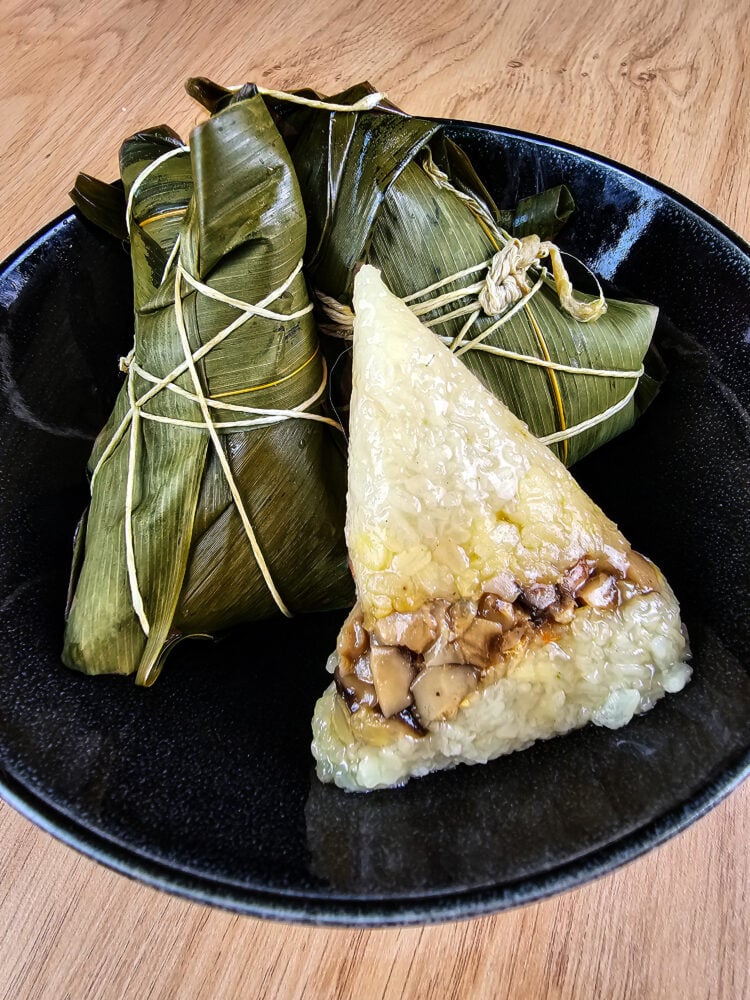A delicious Zongzi recipe to celebrate the Chinese Dragon Boat Festival in a traditional way
What is Zongzi?
Zongzi (咸肉粽), at its core, is glutinous rice stuffed and wrapped in bamboo leaves. There’s an impressive variety: some are sweet, others savory, and different types of leaves can be used.
The fillings are almost endless, ranging from seafood to marinated meats to legumes.
Personally, I was first introduced to a savory Cantonese version with mung beans, dried seafood, and marinated pork belly. During cooking, the fat from the pork belly melts into the rice, creating a truly delicious and flavorful mix. This dish is often prepared for the Dragon Boat Festival, but it’s delicious any time (even if a bit time-consuming to prepare).
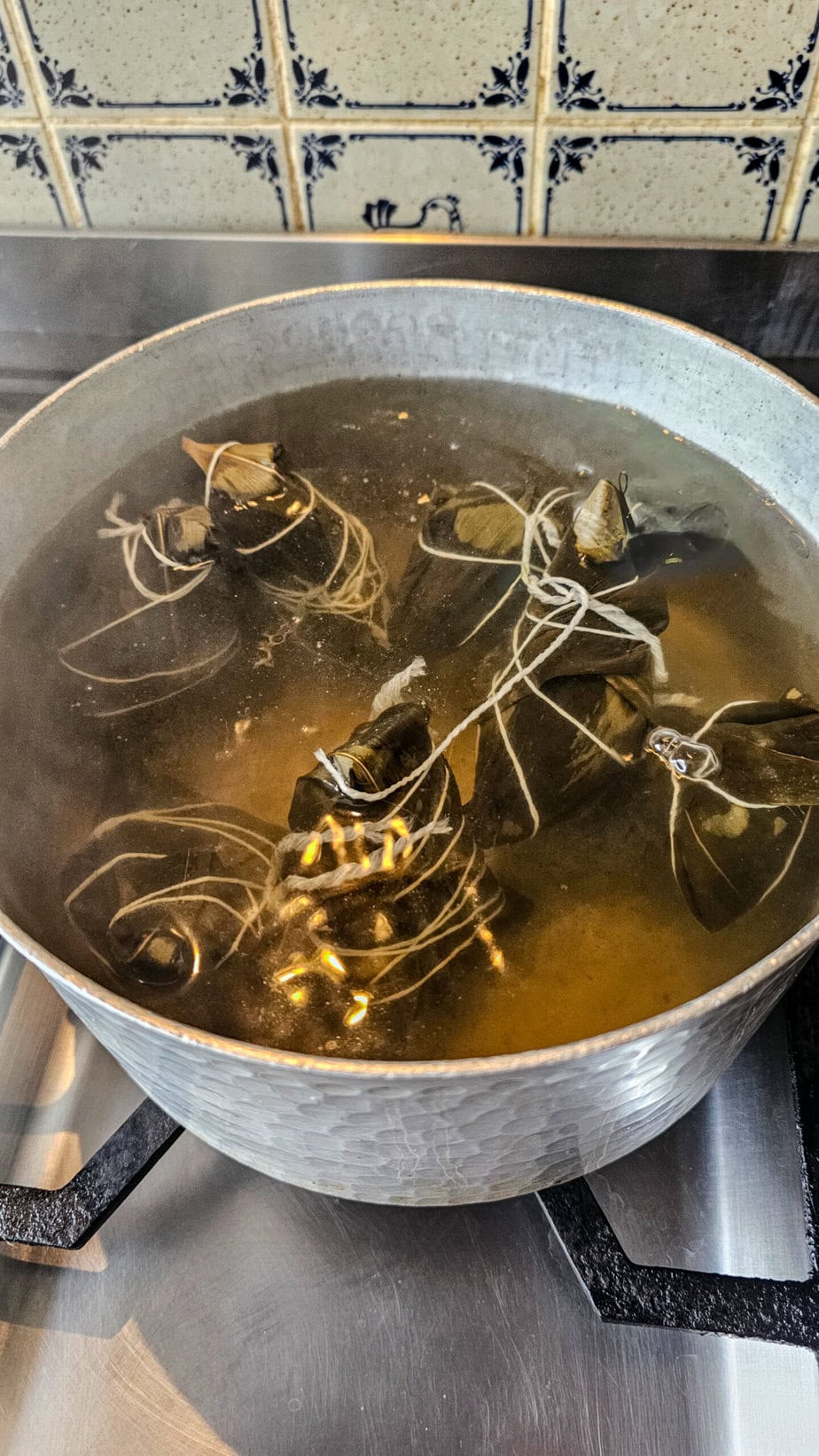
Zongzi and the Chinese Dragon Boat Festival
Chinese people eat zongzi during the Dragon Boat Festival to honor Qu Yuan, a famous Chinese poet who lived 2300 years ago in the State of Chu.
Legend has it that Qu Yuan, an official respected for his wise counsel, was exiled by the king due to the jealousy of some courtiers and their slander.
Exiled to a remote region, Qu Yuan helplessly watched the fall of his country and, desperate to no longer be able to serve it, threw himself into the Miluo River. To protect his body from fish, villagers threw sticky rice into the river.
Another part of the legend says that Qu Yuan appeared in a fisherman’s dream, revealing that a dragon in the river was eating the rice instead of the fish. He advised adding wormwood leaves and five-colored cords to the zongzi to scare the dragon and protect his body. Since then, every 5th day of the 5th lunar month, Chinese people celebrate the Dragon Boat Festival by eating zongzi and participating in dragon boat races.
Zongzi has become a symbol of the tribute paid to Qu Yuan and his values of patriotism, selflessness, and righteousness. This festival also perpetuates the tradition of funeral rituals and filial piety, while reflecting the heritage of dragon worship deeply rooted in Chinese culture.
The main ingredients of Zongzi
Pork: Here, it’s best to use fatty pork belly. Indeed, the fat will deliciously melt during cooking and infuse the rice
Glutinous rice: Here, be careful, we’re not talking about the traditional glutinous rice used in Vietnamese cuisine, Chinese cuisine or Thai cuisine. You need to get what’s called short-grain glutinous rice. It’s richer in amylopectin, which makes the zongzi more cohesive. This is the type of glutinous rice generally used in desserts. It’s not like the jasmine rice used in congee
Here’s the package I found in an Asian supermarket:
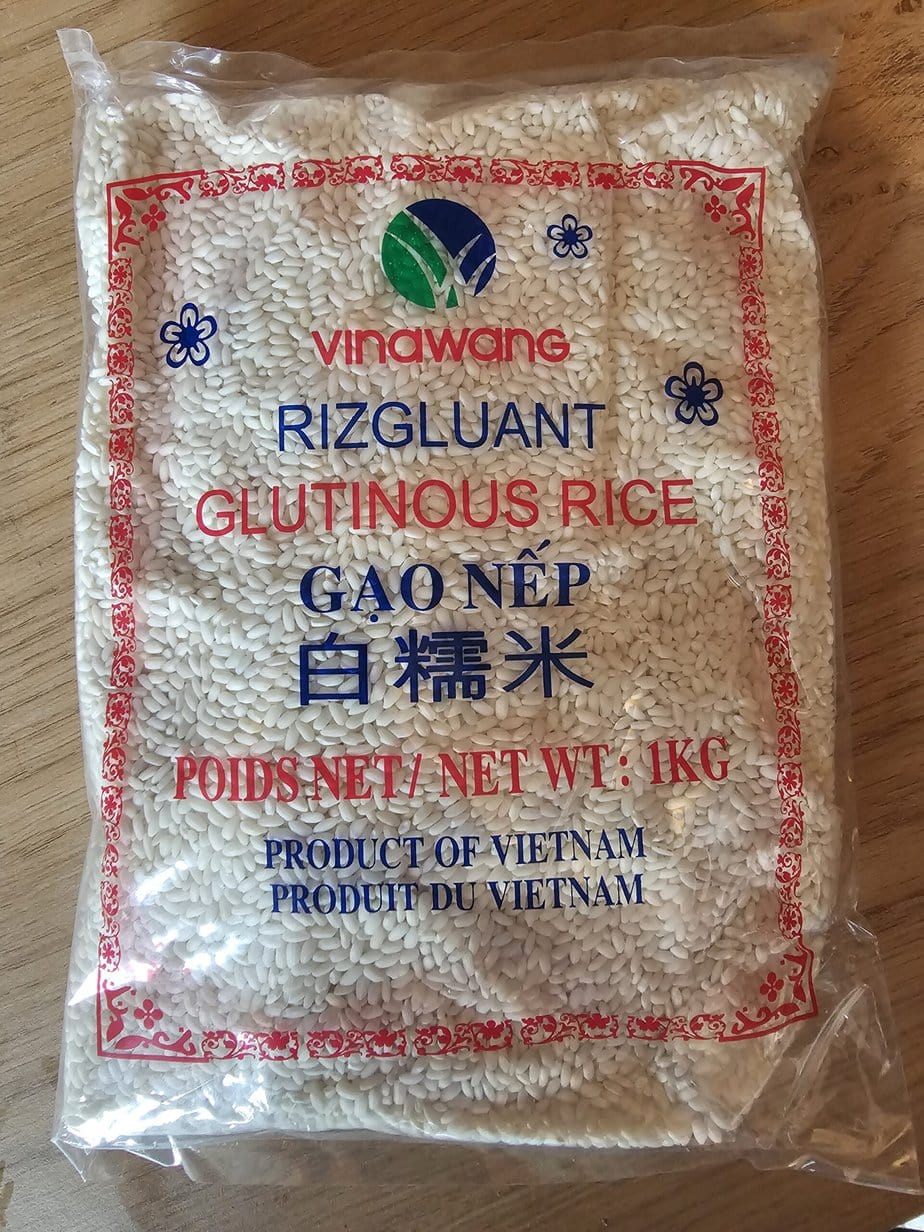
And below is a comparison with “ordinary” or long-grain glutinous rice so you can visualize and find it yourself if the package above is unavailable:
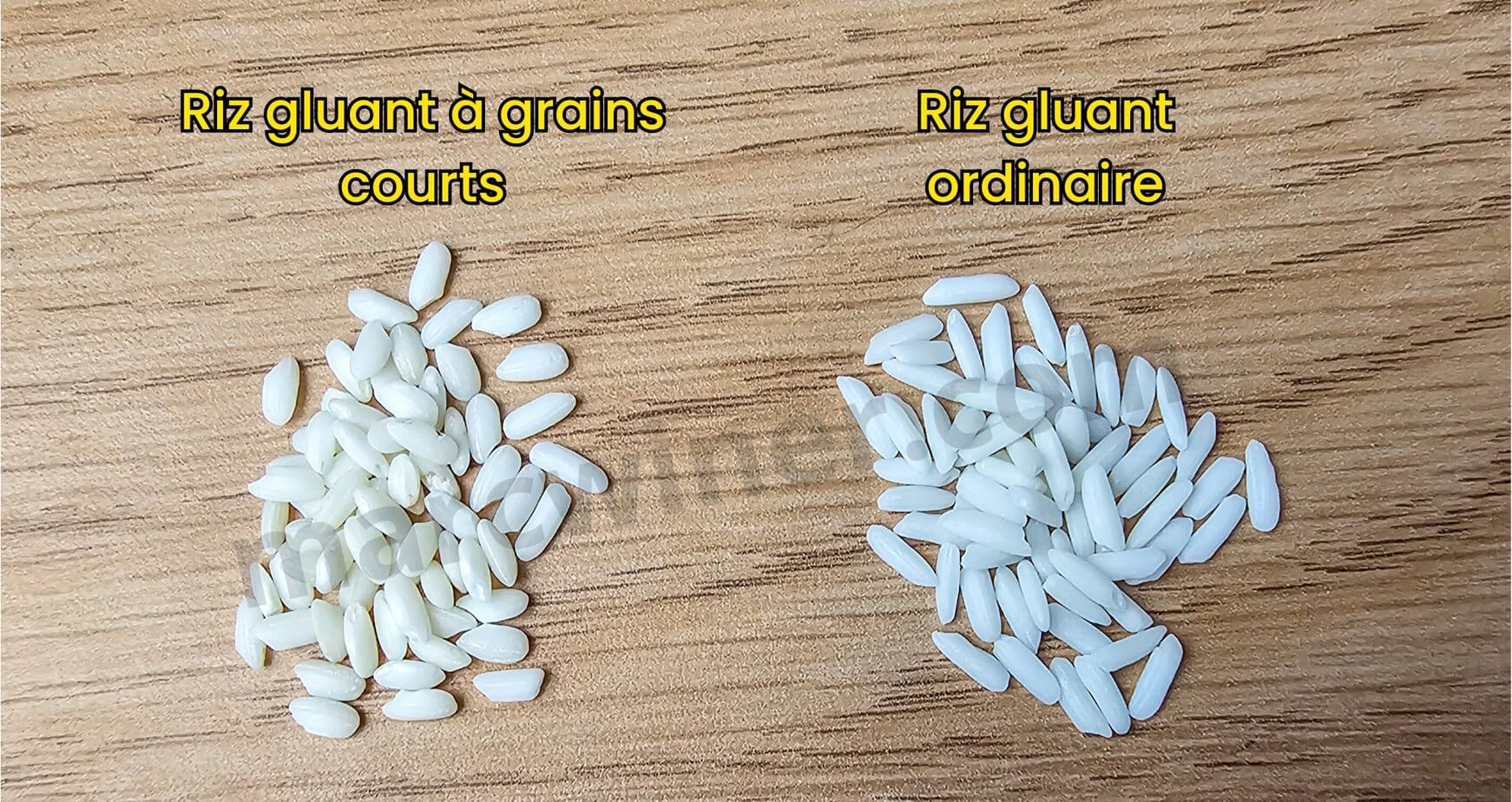
Bamboo leaves: If you’re lucky enough to find fresh ones (be careful, not all species are edible), go for it! Otherwise, you can easily find dried ones in Asian supermarkets. You’ll just need to soak them in water the night before. At worst, use parchment paper
Mung beans: Also used in dahl and in many Asian desserts (with a base of sweet mung bean paste for example)
Red fermented tofu juice (南乳): These small, highly flavorful cubes can serve as delicious toppings for rice and other dishes. Here, we only need the juice. For reference, here’s what the packaging looks like:
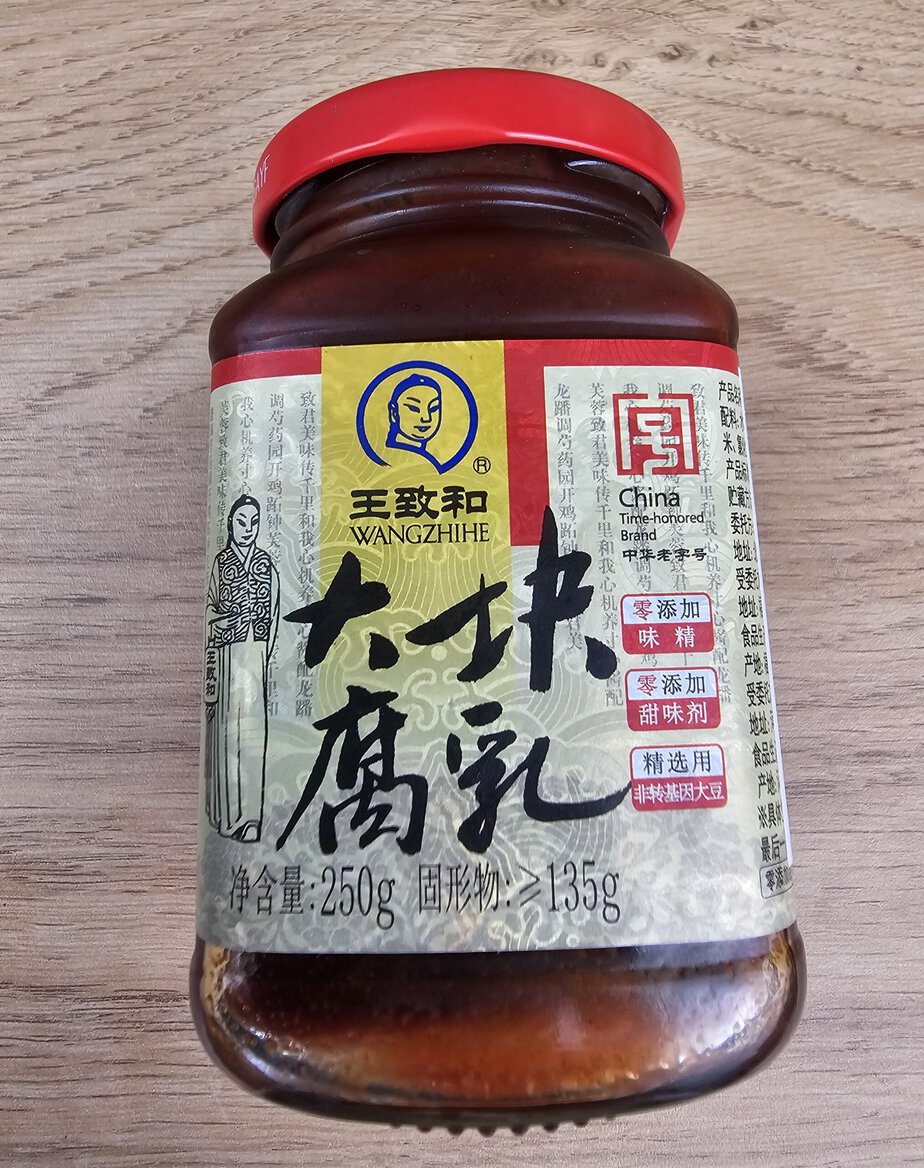
Dried shrimp: You can easily find these in Asian supermarkets
Shaoxing wine: Classic rice wine in Chinese cuisine, you can substitute it with dry sherry
Light soy sauce: This is the ordinary salty soy sauce found everywhere
Chinese five spice: Nowadays you can easily find it in regular supermarkets, but if needed, I have my Chinese five spice powder recipe
Sesame oil: Can be replaced with peanut oil in this recipe
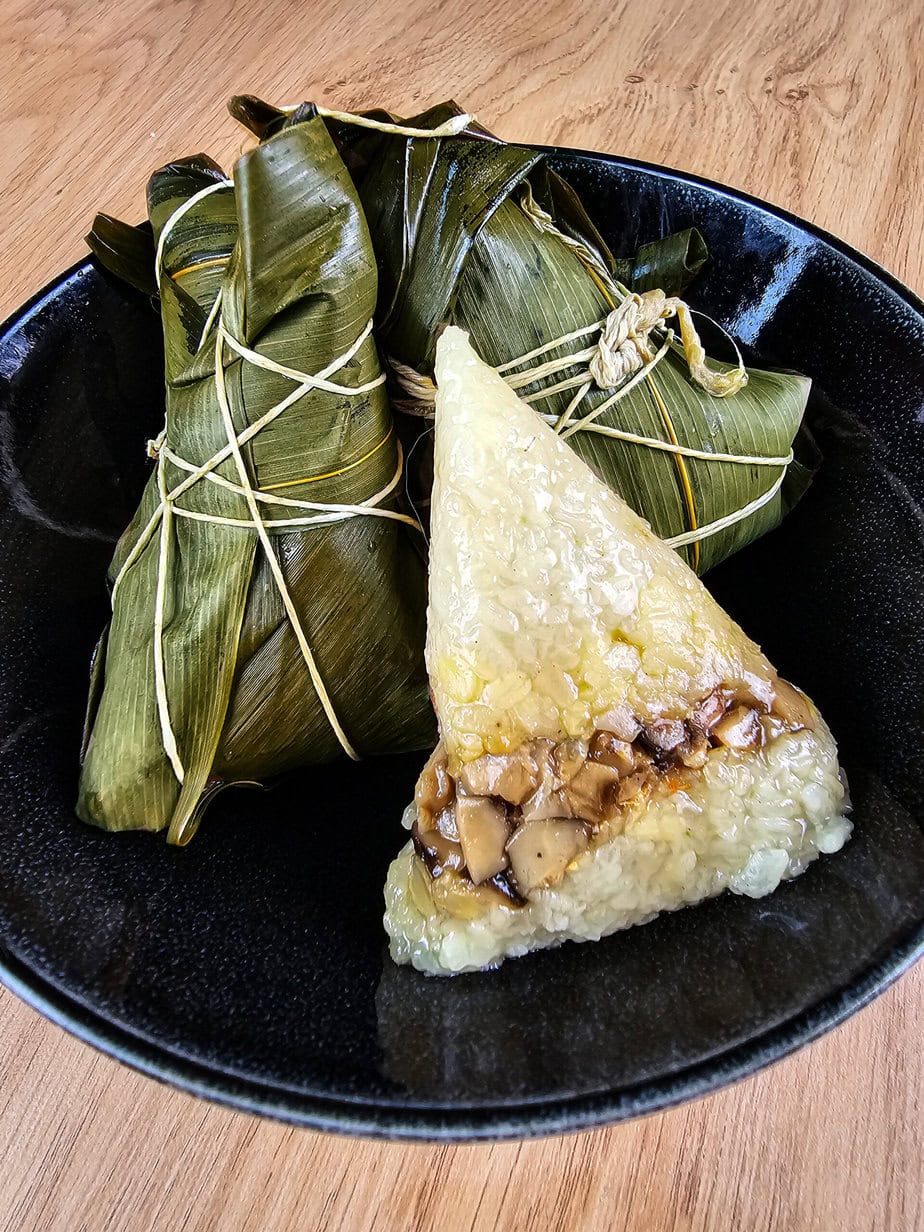
Authentic Chinese Zongzi
Equipment
- Baker’s twine to tie the zongzi
Ingredients
- 24 leaves bamboo fresh or dried or parchment paper
Rice
- 200 g glutinous rice short-grain
- 0.5 tablespoon salt
- 20 g sesame oil
Beans
- 100 g mung beans
- 1 teaspoons salt
Meat
- 80 g pork belly 五花肉, thinly sliced
- 1.5 teaspoons of sugar
- 1 teaspoons five-spice powder
- 1 teaspoons Shaoxing wine
- 2 teaspoons light soy sauce
- 1.5 tablespoons red fermented tofu juice
Mushrooms
- 12 g shiitake mushrooms dried
- 0.25 teaspoons of sugar
- 1 teaspoon light soy sauce
- 1 teaspoon sesame oil
- 10 g dried shrimp
Seasoning for serving
- 1 tablespoon black rice vinegar
- 1 tablespoon light soy sauce
Instructions
The night before
- Thoroughly rinse the glutinous rice and mung beans, then soak them (separately) for 5-8 hours or overnight.200 g glutinous rice, 100 g mung beans
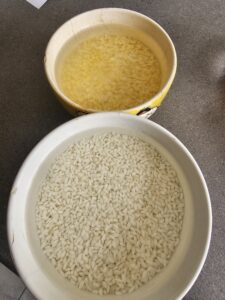
- Rinse and soak the mushrooms and shrimp in cold water overnight. Use a weight to ensure that the whole mushrooms are submerged (they float).12 g shiitake mushrooms, 10 g dried shrimp
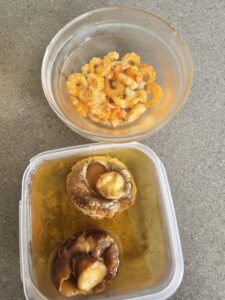
- Thinly slice the pork belly and marinate it with sugar, five-spice powder, Shaoxing wine, light soy sauce, and red fermented tofu juice. Let it marinate in the fridge overnight.80 g pork belly, 1.5 teaspoons of sugar, 1 teaspoons five-spice powder, 1 teaspoons Shaoxing wine, 2 teaspoons light soy sauce, 1.5 tablespoons red fermented tofu juice
- If using dried bamboo leaves, soak them in cold water overnight. Same as the mushrooms, make sure everything is well submerged.24 leaves bamboo
On the day
- drain the rice and mung beans for half an hour.
- Mix the rice with salt and oil, and the mung beans with salt.0.5 tablespoon salt, 20 g sesame oil, 1 teaspoons salt
- Drain the mushrooms
- Remove the stems, slice and marinate with salt, sugar, light soy sauce, and sesame oil for 10 minutes.0.25 teaspoons of sugar, 1 teaspoon light soy sauce, 1 teaspoon sesame oil
- Drain and finely chop the shrimp
- Wipe the bamboo leaves to remove excess water, then cut off the pointed ends.
Assembling the zongzi
- Overlap two bamboo leaves, smooth side up, overlapping by about 1 inch.
- Form a cone with the leaves.
- Add an extra leaf inside the cone, between the two leaves, smooth side up.
- Fill in order with 1 tablespoon of glutinous rice, 0.5 tablespoon of mung beans, 2-3 slices of pork, a pinch of mushrooms, a pinch of seafood, 0.5 tablespoon of mung beans, and 1 tablespoon of glutinous rice. Gently press each layer.
- Fold and tighten the leaves to form a compact package.
- Tie with twine. I’ll be filming a video soon to demonstrate the folding, but in the meantime, you can easily find tutorials on YouTube.
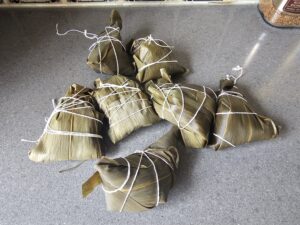
- Bring water to a boil, add the zongzi, then reduce the heat to minimum. Cover and cook for 4-5 hours.
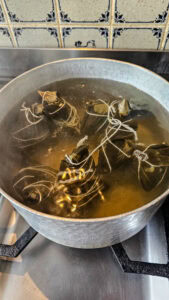
- Remove the zongzi and let them cool to room temperature. The rice will take shape after some time. The zongzi will be even better the next day.
- Reheat the zongzi by steaming them for 5-10 minutes or by moistening them and microwaving for one minute.
- Personally, I like to drizzle with light soy sauce and black rice vinegar1 tablespoon black rice vinegar, 1 tablespoon light soy sauce
Notes
Nutrition
Culinary sources
I based this on the recipe from “Chinese Cooking Demystified”, with adjusted marinade proportions for a bit more punch
